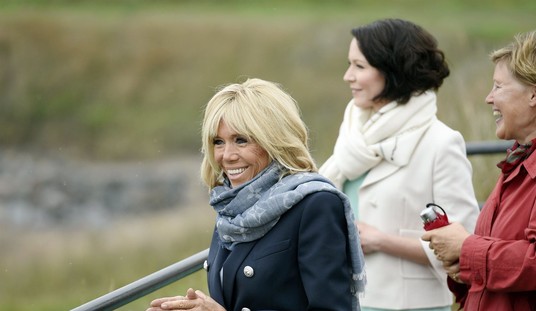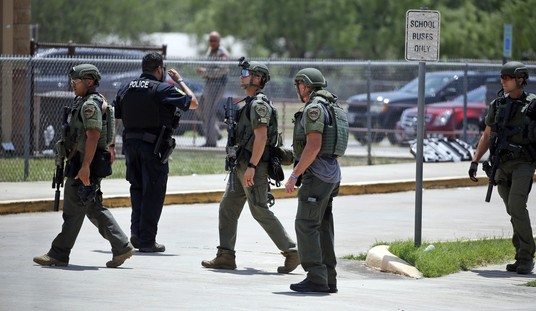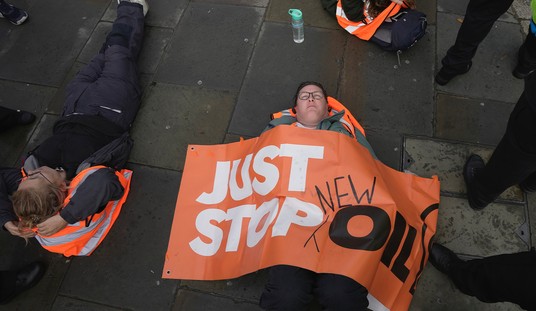The US economy may have remained moribund in the fourth quarter and in 2016 as a whole, but hiring seems to have picked up in the first month of 2017. Today’s jobs report for January shows that the US economy added 227,000 jobs, and both the workforce and the participation rate increased at the same time:
Total nonfarm payroll employment increased by 227,000 in January, and the unemployment rate was little changed at 4.8 percent, the U.S. Bureau of Labor Statistics reported today. Job gains occurred in retail trade, construction, and financial activities. …
After accounting for the annual adjustments to the population controls, the civilian labor force increased by 584,000 in January, and the labor force participation rate rose by 0.2 percentage point to 62.9 percent. Total employment, as measured by the household survey, was up by 457,000 over the month, and the employment-population ratio edged up to 59.9 percent.
However, the BLS applied a significant downward revision to November’s job total, making it more clearly a maintenance-level expansion:
The change in total nonfarm payroll employment for November was revised down from +204,000 to +164,000, and the change for December was revised up from +156,000 to +157,000. With these revisions, employment gains in November and December combined were 39,000 lower than previously reported. Monthly revisions result from additional reports received from businesses since the last published estimates and from the recalculation of seasonal factors. The annual benchmark process also contributed to the November and December revisions. Over the past 3 months, job gains have averaged 183,000 per month.
Bear that average in mind when reading the AP’s analysis of this report:
U.S. employers stepped up hiring last month, adding a healthy 227,000 jobs, and more Americans began looking for work, a sign that President Donald Trump has inherited a robust job market.
January’s job gain was the best since September and exceeded last year’s average monthly gain of 187,000, the Labor Department reported Friday.
Excuse me, but 187K per month wasn’t a “robust jobs market.” It’s only a little above maintenance level when adjusting for population growth. The US adds roughly 2.5 million a year in population, so even at the current level of employment-to-population ratio, we’d need to add 125,000 jobs per month just to stay even. (You can get a higher number using the labor force participation rate.) Adding 227,000 jobs is better, but it’s still not a “robust” month, let alone a trend — and even with that number in January, the three-month average is still slightly below the 2016 monthly average.
Thanks to the addition of almost 600,000 people into the labor force last month, the U-3 unemployment rate has gone up from 4.6% in November to 4.8% in January. Curiously, the U-6 unemployment rate tracked upward almost identically, even though it should be less susceptible to workforce-level changes; it went up from 9.2% in December to 9.4% last month. It’s the first upward tick in U-6 in two years. The trend lines are still good, however, and the job additions with the new workforce entries is a good sign.
Reuters this time has the more realistic analysis:
U.S. job growth surged more than expected in January as construction firms and retailers ramped up hiring, which likely gives the Trump administration a head start as it seeks to boost the economy and employment.
Nonfarm payrolls increased by 227,000 jobs last month, the largest gain in four months, the Labor Department said on Friday. But the unemployment rate rose one-tenth of a percentage point to 4.8 percent and wages increased modestly, suggesting that there was still some slack in the labor market.
Reuters insists that the economy is near full employment based on claims by the Federal Reserve, claims which seem quite strange under the circumstances. We’ve had no dramatic job growth since the end of the Great Recession, for instance, and have experienced no dramatic economic growth that would have driven it. The highest annual GDP growth over the past eight years has been 2.6%, and last year’s was 1.6%, pending final Q4 numbers. We’ve also just had a national election cycle marked by dramatic populist uprisings in both parties, a social phenomenon that simply wouldn’t exist in a full-employment economy.
If nothing else, Donald Trump has a rather unique opportunity to prove or disprove the Fed’s thesis, thanks to that populist uprising. If Trump’s right and we start seeing 300K+ months of hiring and 4% GDP growth, those claims of “full employment” will look pretty silly. That’s still a big if at the moment.








Join the conversation as a VIP Member